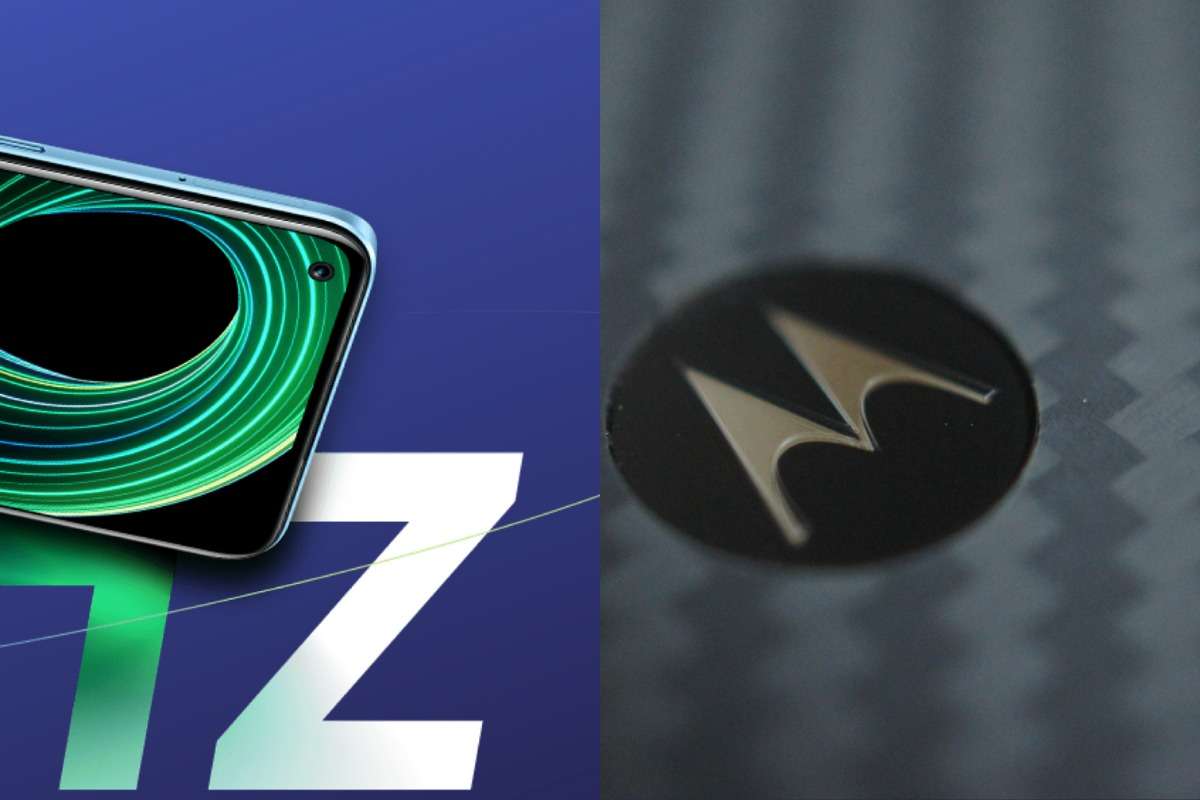
The smartphone market in 2021 is at its undoubted peak, with certain brands like Redmi topping the charts, whilst others like Realme dropping down the chart when it comes to overall response regarding a new device.
A relatively unpopular brand, at least when it comes to sales, Motorola seems to have stepped up its game, especially when it comes to the price to performance ratio. Today, we will be comparing the company's latest launch, the Moto G40 Fusion, with Realme's latest launch, the Realme 8 5G, which promises 5G on a budget.
Which one should you choose and which one should you ignore? Keep on reading to find out.
Realme 8 5G vs Moto G40 Fusion: Design and Display
Design is often an aspect that is dependent on the user to like or dislike. Both the devices have differing designs. The Realme 8 5G makes use of a very generic camera module that we have come to expect from Realme, with the back being subtle and the device being offered in blue and black hues, coupled with a light-refracting pattern.
On the other side of the table, Motorola has chosen a flashy back design, with the G40 Fusion being offered in Frosted Champagne, sporting a matte finish to the back and a Dynamic Gray hue with a glossy finish. The camera module within the Gray G40 Fusion sports a bluish hue, offering a rather funky look.
When it comes to the display, the Realme 8 5G sports a 6.5-inch FHD+ IPS LCD display with a refresh rate of 90Hz as well as a touch sampling rate of 180Hz. The device has a maximum brightness of 600 nits and offers a screen-to-body ratio of 90.5%.
In comparison, the Moto G40 Fusion sports a 6.8-inch Max Vision FHD+ display with HDR10+ and 120Hz refresh rate support. Judging based on the specifications sheet, one would be compelled to go with the Moto G40 Fusion when it comes to the display, whilst a user might inch towards the Realme 8 5G on the design spectrum.
Realme 8 5G vs Moto G40 Fusion: Performance and Connectivity
Performance and connectivity have become key aspects of a smartphone in recent years. The Realme 8 5G is dependent on the Dimensity 700 chipset in this regard. This is paired with the ARM Mali-G57 GPU. As for the connectivity side of things, given below is a list of the bands supported by the Realme 8 5G.
2G: GSM:850/900/1800/1900
3G: WCDMA:B1/B2/B5/B6/B8/B19
4G: LTETDD:B34/B38/B39/B40/B41(2515-2675MHz)
4G: LTE FDD:B1/B2/B3/B5/B7/B8/B28
5G: NR_NSA n41(2515-2675MHz)/n77/n78
5G: NR_SA n1/n28/n41(2515-2675MHz)/n78
Meanwhile, the Motorola G40 Fusion is powered by the Snapdragon 732G chip. In terms of the connectivity, here are the bands supported.
4G: LTE band 1/2/3/4/5/7/8/18/19/20/26/28/38/40/41
3G: WCDMA band 1/2/4/5/8/19
2G: GSM band 2/3/5/
Realme 8 5G vs Motorola G40 Fusion: Cameras
The Motorola G40 Fusion comes with a triple-camera setup at the rear sporting a 64MP primary sensor, an 8MP ultra-wide-angle sensor, and a 2MP depth sensor. Towards the front, there is a 16MP sensor for selfies and video calls. In contrast, the Realme 8 5G also sports a triple-camera setup but with some key changes. There is a 48MP primary sensor paired with a 2MP macro sensor and a 2MP sensor for black and white pictures. Meanwhile, at the front, the device comes with a 16MP sensor for video calls and selfies.
Realme 8 5G vs Motorola G40 Fusion: Verdict
With Miscellaneous features and key usability stats such as the availability of a higher refresh rate display, a better set of cameras, faster charging, a larger battery (6000 mAh in comparison to 5000 mAh) and bone stock android, the prospect of the Moto G40 Fusion is one that will appeal to most, if not all. The Realme 8 5G makes too many downgrades for a feature that is a namesake as of now, with proper implementation of 5G far from reality.















